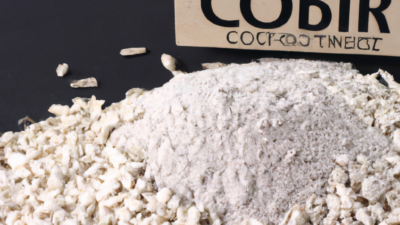In the intricate web of global trade, commodities—ranging from crude oil to coffee beans—serve as the lifeblood of economies, influencing everything from individual consumer prices to national economic policies. Understanding how these fundamental goods are priced is crucial for investors, businesses, and policymakers alike. This article delves into the multifaceted mechanisms behind commodity pricing, exploring the various factors that drive market fluctuations. From supply and demand dynamics to geopolitical events and speculative trading, we will unravel the complexities that determine the value of the essential resources fueling our world. Join us as we dissect the forces at play in the commodity markets and shed light on the strategies and tools used to navigate this ever-evolving landscape.
Sure, here is a content outline for an article on "How Commodities Are Priced":
Certainly! Here's an HTML-formatted content outline for an article on "How Commodities Are Priced":
“`html
<!DOCTYPE html>
<html lang="en">
<head>
<meta charset="UTF-8">
<meta name="viewport" content="width=device-width, initial-scale=1.0">
<title>How Commodities Are Priced</title>
<style>
body {
font-family: Arial, sans-serif;
line-height: 1.6;
}
h2 {
color: #333;
}
p {
margin-bottom: 1em;
}
ul {
margin-left: 20px;
list-style-type: disc;
}
</style>
</head>
<body>
<h2>Introduction</h2>
<p>Commodities are raw materials or primary agricultural products that can be bought and sold, such as gold, oil, or wheat. Understanding how these commodities are priced is crucial for investors, traders, and consumers alike.</p>
<h2>Factors Influencing Commodity Prices</h2>
<p>Several key factors influence the price of commodities:</p>
<ul>
<li><strong>Supply and Demand:</strong> The most fundamental factor. When demand exceeds supply, prices rise, and vice versa.</li>
<li><strong>Geopolitical Events:</strong> Political stability or unrest in major producing regions can impact prices significantly.</li>
<li><strong>Economic Indicators:</strong> Inflation, interest rates, and economic growth can all affect commodity prices.</li>
<li><strong>Currency Fluctuations:</strong> Commodities are often priced in US dollars, so changes in the dollar's value can impact prices.</li>
<li><strong>Seasonal Changes:</strong> Agricultural commodities, in particular, are affected by seasonal weather patterns.</li>
</ul>
<h2>Pricing Mechanisms</h2>
<p>Commodities are priced through various mechanisms:</p>
<ul>
<li><strong>Spot Prices:</strong> The current market price at which a commodity can be bought or sold for immediate delivery.</li>
<li><strong>Futures Contracts:</strong> Agreements to buy or sell a commodity at a predetermined price at a specified time in the future.</li>
<li><strong>Options Contracts:</strong> Contracts that give the buyer the right, but not the obligation, to buy or sell a commodity at a specified price within a certain time period.</li>
</ul>
<h2>Market Participants</h2>
<p>Various participants play a role in the commodity markets:</p>
<ul>
<li><strong>Producers:</strong> Companies or individuals that extract or grow commodities.</li>
<li><strong>Consumers:</strong> Entities that use commodities as inputs for production or consumption.</li>
<li><strong>Speculators:</strong> Traders who aim to profit from price movements rather than using the commodities themselves.</li>
<li><strong>Hedgers:</strong> Participants who enter the market to mitigate the risk of price fluctuations.</li>
</ul>
<h2>Conclusion</h2>
<p>Understanding how commodities are priced involves considering a range of factors, from supply and demand dynamics to geopolitical events and economic indicators. By grasping these elements, market participants can make more informed decisions and better navigate the complexities of the commodity markets.</p>
</body>
</html>
“`
This HTML structure includes sections for an introduction, factors influencing commodity prices, pricing mechanisms, market participants, and a conclusion. Each section is formatted with headings and lists to improve readability.













